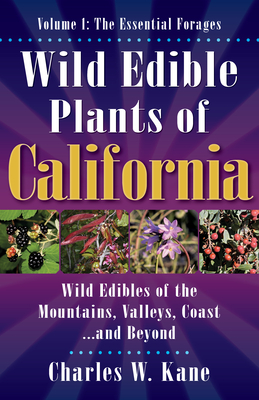
Wild Edible Plants of California: Volume 1: The Essentail Forages
Description
A state of significant plant diversity, California is home to more species than any other. Weather, elevation, and latitude all play parts in the region's floristic dynamism. For the wild edible plant enthusiast, this means a variety of sustaining forages are to be had, however, found in one place, most are not. With Wild Edible Plants of California (Volume 1), the reader has access to a concise publication, instructing not only on the where, but too, the what and when of California's wild edible bounty.
Covering the state's most essential forages, preference has been given to plants that are abundant and/or have more caloric/nutritional/traditional value than other edibles. Well-suited for the backpack, cargo-pocket, or glovebox, the publication's form is a 64-page booklet. Over 160 color photos and a state/county location image for every profile assists the reader in plant identification. Aside from the main focus of how to use and prepare each wild edible, additional sections include medicinal uses (if applicable), cautions, and special notes. A sustenance rank, choice edible part/ season indictor, and general index all serve to increase the publication's usefulness.
Plant List: Agave, Amaranth, Beargrass, Biscuitroot, Bitterroot, Black Nightshade, Blackberry, Bluedicks, Bracken Fern, California Hazel, California Walnut, Cattail, Chia, Chokecherry, Cholla, Currant, Desert Lily, Elder, Fan Palm, Gooseberry, Ground Cherry, Hollygrape, Indian Plum, Indian Rice Grass, Ironwood, Lambsquarters, Madrone, Manzanita, Mariposa Lily, Mesquite, Miner's Lettuce, Mulberry, Nettle, Oak, Paloverde, Panicgrass, Pellitory, Pennywort, Pinyon Pine, Prickly Pear, Raspberry, Redbud, Salal, Salsify, Serviceberry, Thimbleberry, Tuber Starwort, Tule, Western Spring Beauty, Wild Gourd, Wild Grape, Wild Onion, Wild Rose, Wild Strawberry, Wolfberry, Yampa, Yellow Nutsedge, and Yucca.
